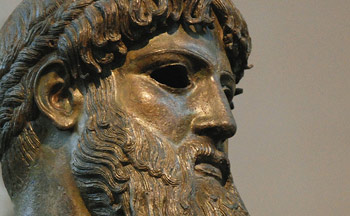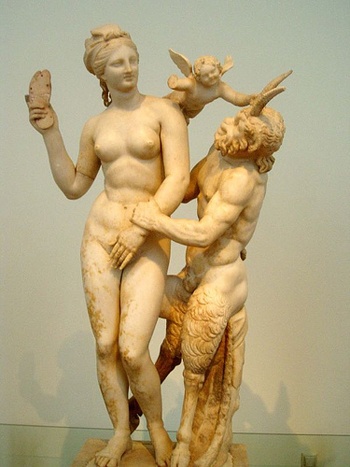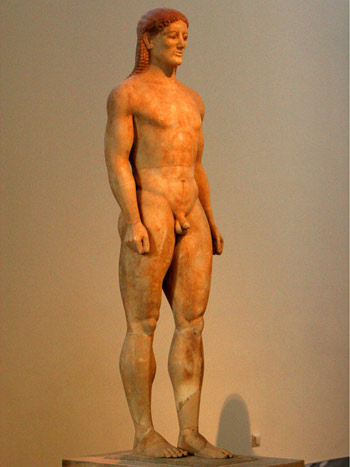Archaeological Museums of Athens

The fact that Athens has a long ancient history that dates back to 6,000 BC has leaded to the construction of several archaeological museums in the city, that house exposures created and used by its ancient inhabitants. The visitor can have an overall review of the ancient greek culture which is very popular to foreign people thanks to its great flourishing during ancestry. One can admire the architectural orders of the ancient temples devoted to the gods of the ancient Greece, great sculptures depicting the beauty, the youth and the aesthetic standards of the ancient world while revealing excellent and talented sculptors. Pottery, tools and several objects used in the daily life of the ancient people show us who the ancestors of modern tools have been in the past and how much they have been developed during the years. Paintings on the pottery reveal scenes from various events or even from their routine while the busts of the statues show as how the ancient philosophers, politicians, orators and other great personalities looked like.
- 1. National Archaeological Museum
- 2. Epigraphic Museum
- 3. Archaeological collection of the metro at Acropolis station
- 4. Archaeological collection of the metro at Panepistimio station
- 5. Numismatic Museum of Athens
- 6. Archaeological collection of the metro at Evangelismos station
- 7. Kerameikos Museum
- 8. Museum of the Ancient Agora of Athens
- 9. Kanellopoulos Museum
- 10. Acropolis Museum
- 11. Acropolis Study Centre
- 12. Archaeological collection of the metro at Syntagma station
- 13. Benaki Museum
- 14. Goulandris Museum of Cycladic and Ancient Greek Art – Nicholas P. Goulandris Foundation
- 15. Archaeological Museum of Piraeus
- 16. Outdoor exhibition of archaeological findings
- 17. Museum of Ancient Cypriot Art
- 18. Ramnus Museum-Site
- 19. Archaeological Museum of Elefsina
- 20. Archaeological Museum of Salamina
The National Archaeological Museum

The National Archaeological Museum of Athens is the largest museum in Greece and it is located in Athens town street, Patission Street. Its construction begun in 1866, designed by the architect Panagiotis Kalokos but in 1888 the famous architect Ernst Ziller made some modifications to these design and in 1939 the museum had one more wing, designed by Geprge Nomikos. The exposures of the museum had been hidden during the Second World War and they were brought on display after 1945.
A visit to this museum requires at least 3 hours seeing all of its exposures. It is highly recommended to split it in two visits within one day in order not to get tired due to the plethora of the exposures will see. The fact that it is located in the heart of Athens allows the visitors to have a rest at a café nearby and then continue their tour in the museum. However, if somebody has not so much free time, then the highlights of the Archaelogical Museum are located in the rooms 3,4,5,6 for the prehistoric exhibits, then the rooms 7-33 for the sculptors, the rooms 40-41 for the Egyptian collection and the rooms 49-56 for the small art pieces. The notes that accompany each exposure are a useful guide but one can find guide books in the souvenir shops located on the ground floor of the museum.
Future visitors of the National Archaeological Museum of Athens are also recommended to have prepared their visit to the museum by making a research on its exposures either by reading some information on it on the web or by reading a guide book. This helps people get familiar with the museum and understand as much as possible when looking at the exposures. It is as if having prepared a laboratory experiment by studying the theoretical aspect of it before starting practicing.

The exhibits of the museum have been placed on the basis of their chronological order starting from the Neolithic Era. You will find oldest objects that prove humans existence 8,000 years ago in the area of Attica, exposures from the Bronze Age and a chamber hosting a lot of objects belonging to the Mycenaean Era such as golden death masks, ivory made items, frescoes, grave steles and other really interesting findings from the centers of the Mycenaean culture in Argolis, Sparta, Messenia, Cythera, Boeotia and Attica. You will get impressed by the jewellery from Troy and some exposures that were found in Limnos islands were the oldest Aegean settlement was located. There is also a room devoted to the Cycladic Art where a small figurine depicting a musician an harp and another figurine of a flute player are exposed. They were made of marble from Paros island.
The museum houses almost 30 rooms with sculptors hosting one of the most important Sculptures Collection in the world, dating from the 7th century BC until the beginning of the Byzantine Era. Among them, the visitor will see a colossal kouros statue found in Poseidons sanctuary, the Kouros of Melos and one of the masterpieces of the museum which is a bronze statue, 2 meters tall depicting the god Poseidon, that was found in Artemissio Cape, Evia. There is a very large collection composed of funerary sculptures some of them made by pupils of famous sculptors, like Pheidias. The Roman copies of greek statrues are of high importance as they include the statue of Apollo as well as the great gold-ivory statue of Athena that had been placed in the Parthenon, both made by Pheidias during the ancestry.
The visitor will also have the opportunity to admire great classical times statues such as the Marathon Boy made of bronze by a very famous sculptor, Praxiteles. The most attracting example of the Hellenistic times is the groups of Aphrodite with Pand and a winging Eros.
The museum hosts also a rich collection of bronze made exposures as well as one of the most important Egyptian collections in Europe.
Opening hours:
Monday: 13:30 – 20:00
Tuesday – Sunday: 8:00 – 20:00
Closed on the following dates: December 25th -26th, January 1st, Easter, May 1st



